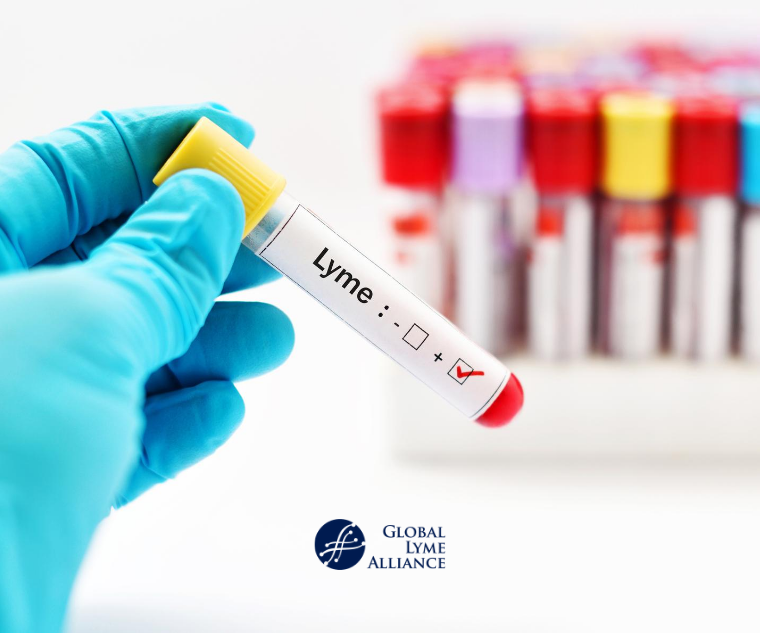
by Timothy J. Sellati, Ph.D., Chief Scientific Officer, Global Lyme Alliance
An early and accurate test result is critical to effectively treat most diseases. Especially Lyme disease. The earlier one is diagnosed and treated, the better the odds are for recovery. Unfortunately, current Lyme disease diagnostics are highly inaccurate for early diagnosis, having a direct negative impact on patients’ health.
The most common means of laboratory diagnosis of Lyme disease is an indirect test that detects the immune response (antibodies) triggered by the presence of Borrelia burgdorferi, the causative agent of Lyme disease. The current standard two-tiered test (STTT) relies on a first-tier enzyme immunoassay (EIS), that is relatively sensitive but not extremely specific. If positive or equivocal the EIA is followed by a second-tier Western immunoblot assay, that shows improved specificity. Shortcomings associated with the STTT include missing as much as 60% of early Lyme cases due to no or low antibodies levels during the first few weeks of infection. Moreover, the second-tier assay is technically difficult and time-consuming to perform and the results are prone to subjective interpretation resulting in both false negative and false positive results. Beyond the tests’ limitations, detection of antibodies as a basis for diagnosis is confounded by the fact some patients may not produce antibodies against B. burgdorferi, while others will start and then stop producing them, and still others will continue to produce antibodies long after treatment and treatment/cure and resolution of symptoms.
As part of our mission to conquer Lyme disease, in 2017 Global Lyme Alliance was responsible for a report that publicly addressed the limitations of current two-tiered tests while simultaneously seeing the real potential of newer technologies to overcome many of the limitations. This finding supports GLA’s ongoing work with top researchers to develop a more accurate diagnostic test that will better serve patients and the community.
Also in 2017, GLA partnered with Ionica Sciences, a startup diagnostics company based at Cornell University’s McGovern Center life sciences incubator in Ithaca, New York, to accelerate the development of a highly sensitive direct Lyme disease diagnostic test. Called IonLymeTM, this novel testing strategy recognizes a specific bacterial protein [Outer surface protein A (OspA)] shed in minute quantities by B. burgdorferi into the bloodstream during early infection rather than waiting weeks for antibodies to be produced. OspA is thought to only be in the blood during active infection. So, IonLyme not only detects early Lyme disease much better than current solutions, it also allows testing for reinfection, and can help to determine if a person is cured of active Lyme disease.
While still in the validation phase of development Ionica Sciences has made a significant advance by demonstrating excellent diagnostic accuracy with IonLymeTM using biobanked blood samples. Currently, the assay generates statistically significant results with >90% clinical sensitivity and >95% clinical specificity. Thus, while other companies have made important strides in developing modified two-tiered tests (MTTTs), that rely on two EIAs rather than an EIA and Western immunoblot, which show increased sensitivity in diagnosing early Lyme disease, their approach is still limited by their focus on measuring antibody responses.
GLA is a strong believer that the more minds that work toward a goal, the better. Partnerships like we have with Ionica will speed the delivery of the tools and resources that will help patients, from diagnostics to treatment. If you are interested in supporting Ionica’s current endeavor and want to participate in their current fundraising campaign, click here.
Related posts:
Progress in New Ionica Sciences Lyme Disease Diagnostic Test Funded by Global Lyme Alliance
The Advantage of Public-Private Partnerships to Accelerate Progress for Patients
Global Lyme Alliance Partners with Ionica Sciences to Develop New Lyme Disease Diagnostic Test

Timothy Sellati, P.h.D.
Former Chief Scientific Officer at Global Lyme Alliance
Timothy J. Sellati, PH.D. is Former Chief Scientific Officer at Global Lyme Alliance. As GLA’s Chief Scientific Officer, Dr. Sellati led GLA’s research initiatives to accelerate the development of more effective methods of diagnosis and treatment of Lyme and other tick-borne diseases.






-2.jpg)